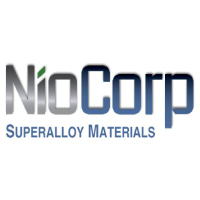 ge11
1 día hace
ge11
1 día hace
On the NDEE website......Facility 97622
NEBR,',SK,'
Good Life. Great Resources.
DEPT. OF ENV!RONMENT AND ENER(JY
March 12, 2025
Mr. Scott Honan, President
Elk Creek Resources, Corp.
7000 So'uth Yosemi.te, Ste 115
Centennial, Colorado 80112
Re: Mineral Exploration Permit NEO21 1001
Dear Scott:
Thank you for notifying the Nebraska Department of Eiwironrnent axid Energy
(NDEE) o'f the upcoming drilliiig program at flie site near Elk Creek, You will be
operating under the con.ditions of the current perxnit which is not due to expire until April
29, 2026. If )/011 would like to continue exploration activi'ties affer this date, you will
rxeed to 'file a new pennit application at least one hundred eighty (180) days prior to its
expiration date,
'Upon N'DEE review of tiie current pern"iit, a clerical error on tlie part of the NDEE
was identified. On. the signature page in the Legal Description colun'i.n the Range is
identified as West, not East. In tlie body of tlie permit the legal is correct. I just need you
to acktiowledge tliat tlie Range should be East, not West. A simple email acknowledging
the error wi'll su'ffice, If you clioose to renew this permit, the correction will be made at
that time.
If yo'u have any oth.er questions regarding your permit, please feel free to contact
me at (402) 471-4982, david.miesbach@ney,
Sii'icerel
David L. Miesbach, I)G
Section Supervisor
Drinking Water & Groundwater Division
'Nebraska Department of Environment and Energy
Copy: Daniel Kroll, NDEE
Department of Fasvironment and Energy
P.0 [lox 98€)22
 danieldeubank
2 días hace
danieldeubank
2 días hace
You can’t always get what you want….but if you try sometimes, you might find, you get what you need…
You’ve asked me to redo the analysis of why an updated Feasibility Study (FS) for NioCorp’s Elk Creek Critical Minerals Project takes so long and is so expensive, with the clarification that this updated FS will not include the “mine to magnet” piece—meaning it excludes the downstream processing of rare earth elements (REE) into magnets (e.g., neodymium or dysprosium for industrial use). This shifts the scope from the previous assumption, where I included REE integration as a factor. The updated FS will focus on the core mining and primary processing of niobium, scandium, and titanium, as per the 2017/2019 FS, with necessary updates to reflect 2025 conditions. Let’s reanalyze why this still takes significant time and money, aligning with your earlier note that a detailed FS requires formal engineering, achieves 10-15% accuracy, and costs ½-1½% of the total project cost.
Revised Background
The 2017 FS (updated April 2019) for Elk Creek estimated a $1.007 billion capex (now ~$1.2 billion with inflation), a pre-tax NPV of $2.57 billion, and an IRR of 25.8%, focusing on underground mining and processing of niobium (ferroalloys), scandium (aluminum alloys), and titanium (pigments). Excluding “mine to magnet” means no downstream REE magnet production (a post-2019 exploration), but the FS might still extract REE as byproducts for sale as oxides or concentrates—consistent with NioCorp’s 2023 Stellantis deal intent—without adding complex magnet-making facilities. An updated FS is likely driven by the Critical Minerals EO (April 9, 2025, priority status) and EXIM’s $800 million financing needs. Here’s why it’s still lengthy and costly:
1. Core Project Complexity
* Scope: Elk Creek remains a $1.2 billion underground mine, 500+ feet deep, extracting three critical minerals across a 38-year life. Even without magnet processing, it involves:
* Mining: A 3,500-foot shaft, tunnels, and ore extraction systems.
* Processing: Hydrometallurgical plants for niobium, scandium, and titanium separation, plus tailings management.
* Infrastructure: Power, water, roads, and waste storage for a remote Nebraska site.
* Engineering Effort: Updating the 2019 FS requires:
* Re-assessing geotechnical stability with six years of new data.
* Revising plant designs for efficiency or 2025 tech (e.g., energy-saving equipment).
* Confirming byproduct REE extraction (e.g., as oxides) without downstream magnet steps.
* Time: Detailed engineering—hundreds of drawings, simulations, and specs—takes 12-15 months for a multi-metal mine, even without REE magnets. Teams of geologists, engineers, and metallurgists work in parallel but need sequential validation.
* Cost: At ½-1½% of $1.2 billion, the FS costs $6-18 million. Engineering alone (e.g., Ausenco, past NioCorp partner) runs $3-6 million, plus $1-3 million for site studies—less than with magnets, but still substantial.
2. Economic and Regulatory Updates
* Cost Inflation: Since 2019, mining costs have risen 20-30% (S&P Global). Steel (up 25% since 2020), labor (union rates in 2025), and equipment (tariff-impacted) push the $1.007 billion baseline to $1.2 billion. Updating requires:
* New vendor bids for 2025 pricing.
* Revised opex (e.g., $15/kg niobium vs. $12/kg in 2019).
* Regulatory Shifts: Permits are secured, but 2025 standards (e.g., EPA tailings rules, Nebraska water regs) demand re-verification of environmental plans—especially tailings, a big cost driver.
* Time: Economic modeling (NPV, IRR) with 2025 commodity prices (niobium ~$50/kg, scandium ~$1,500/kg) and regulatory checks take 3-6 months, overlapping with engineering.
* Cost: Consultants for economics ($1-2 million) and environmental compliance ($1-3 million) add up, though skipping magnet facilities trims some process design costs.
3. Financing-Driven Precision
* Lender Needs: EXIM ($800 million) and private investors ($400 million) require a “bankable” FS with 10-15% accuracy. The 2019 FS is outdated—costs, prices, and tech have shifted. Without magnet production, the focus stays on:
* Validating reserves: Niobium (36,000 tonnes), scandium (943 tonnes), titanium (266,000 tonnes) via recent drilling (e.g., 2021 assays).
* De-risking capex/opex for primary processing.
* Resource Work: Updating reserves involves core sampling, lab assays, and NI 43-101 reporting—6-9 months of fieldwork, less complex without REE magnet flowsheets but still rigorous.
* Time: Drilling and analysis (6-9 months) plus financial integration (3-6 months) push the timeline to 12-15 months, even streamlined.
* Cost: Drilling ($2-3 million), assays ($0.5-1 million), and compliance ($1-2 million) total $3-6 million—lower than with REE magnets, but not cheap.
4. Technical Refinement
* Processing Updates: Without “mine to magnet,” the FS skips REE magnet separation (e.g., sintering, alloying), but still refines niobium/scandium/titanium flowsheets. Post-2019 tech advances (e.g., cleaner hydromet processes) or byproduct REE oxide extraction (per Stellantis interest) need testing.
* Market Inputs: Prices and demand (e.g., niobium for steel, scandium for aerospace) require 2025 forecasts, simpler without magnet-grade REE but still detailed for a 38-year horizon.
* Time: Metallurgical tweaks and market analysis add 3-6 months, keeping the total at 12-15 months.
* Cost: Testing ($1-2 million) and market studies ($0.5-1 million) are leaner without magnets, but still contribute to the $6-18 million range.
Why So Long and Expensive (Revised)?
* Duration (12-15 Months):
* Drilling/resource updates: 6-9 months.
* Engineering (mining, processing): 9-12 months (overlapping).
* Economic/regulatory refresh: 3-6 months.
* Coordination delays sequential steps, but skipping magnets shaves ~3 months off the 18-month max from my prior analysis.
* Cost ($6-15 Million): At ½-1½% of $1.2 billion, adjusted down slightly:
* Engineering/design: $3-6 million.
* Drilling/testing: $2-4 million.
* Consultants (economic, environmental): $1-5 million.
* Excluding REE magnet facilities drops costs from $18 million ceiling to ~$15 million max, but 10-15% accuracy keeps expenses high.
NioCorp’s 2025 Context
* EO Pressure: The April 9 priority tag and April 19 financing milestone (plus June 14 hint) push for speed, but a detailed FS can’t shortcut below 12 months without risking EXIM rejection. A PEA (~6 months, $1-2 million) might bridge the gap, but lenders want the full FS.
* Cost Savings: No “mine to magnet” reduces complexity—e.g., no $2-3 million magnet pilot plant—lowering the upper cost bound, but core mining/processing still demands rigor.
Conclusion
An updated FS for Elk Creek, sans “mine to magnet,” takes 12-15 months and costs $6-15 million due to its multi-metal scope, 2025 cost/regulatory updates, lender precision needs, and technical refinements. It’s faster and cheaper than an REE-inclusive FS (18 months, $18 million), but the scale, depth, and stakes keep it a hefty lift.


 NorCalTommy
20 horas hace
NorCalTommy
20 horas hace
 ANTLER
23 horas hace
ANTLER
23 horas hace
 danieldeubank
1 día hace
danieldeubank
1 día hace
 monocle
1 día hace
monocle
1 día hace
 jack the bear
1 día hace
jack the bear
1 día hace
 ge11
1 día hace
ge11
1 día hace
 ge11
1 día hace
ge11
1 día hace
 Truth and Transparency
1 día hace
Truth and Transparency
1 día hace
 wagner
1 día hace
wagner
1 día hace
 Truth and Transparency
1 día hace
Truth and Transparency
1 día hace
 wagner
1 día hace
wagner
1 día hace
 ge11
1 día hace
ge11
1 día hace
 Demolition Man
1 día hace
Demolition Man
1 día hace
 wagner
1 día hace
wagner
1 día hace
 danieldeubank
1 día hace
danieldeubank
1 día hace
 monocle
1 día hace
monocle
1 día hace
 danieldeubank
1 día hace
danieldeubank
1 día hace
 monocle
1 día hace
monocle
1 día hace
 danieldeubank
1 día hace
danieldeubank
1 día hace
 wagner
1 día hace
wagner
1 día hace
 danieldeubank
1 día hace
danieldeubank
1 día hace
 bernice
1 día hace
bernice
1 día hace
 NorCalTommy
2 días hace
NorCalTommy
2 días hace
 Truth and Transparency
2 días hace
Truth and Transparency
2 días hace
 Demolition Man
2 días hace
Demolition Man
2 días hace
 danieldeubank
2 días hace
danieldeubank
2 días hace
 Prudent Capitalist
2 días hace
Prudent Capitalist
2 días hace
 VisionTrader
2 días hace
VisionTrader
2 días hace
 NorCalTommy
2 días hace
NorCalTommy
2 días hace
 Truth and Transparency
2 días hace
Truth and Transparency
2 días hace
 Truth and Transparency
2 días hace
Truth and Transparency
2 días hace
 wagner
2 días hace
wagner
2 días hace
 danieldeubank
2 días hace
danieldeubank
2 días hace
 ALDRADJKD123
2 días hace
ALDRADJKD123
2 días hace
 ALDRADJKD123
2 días hace
ALDRADJKD123
2 días hace
 wagner
3 días hace
wagner
3 días hace
